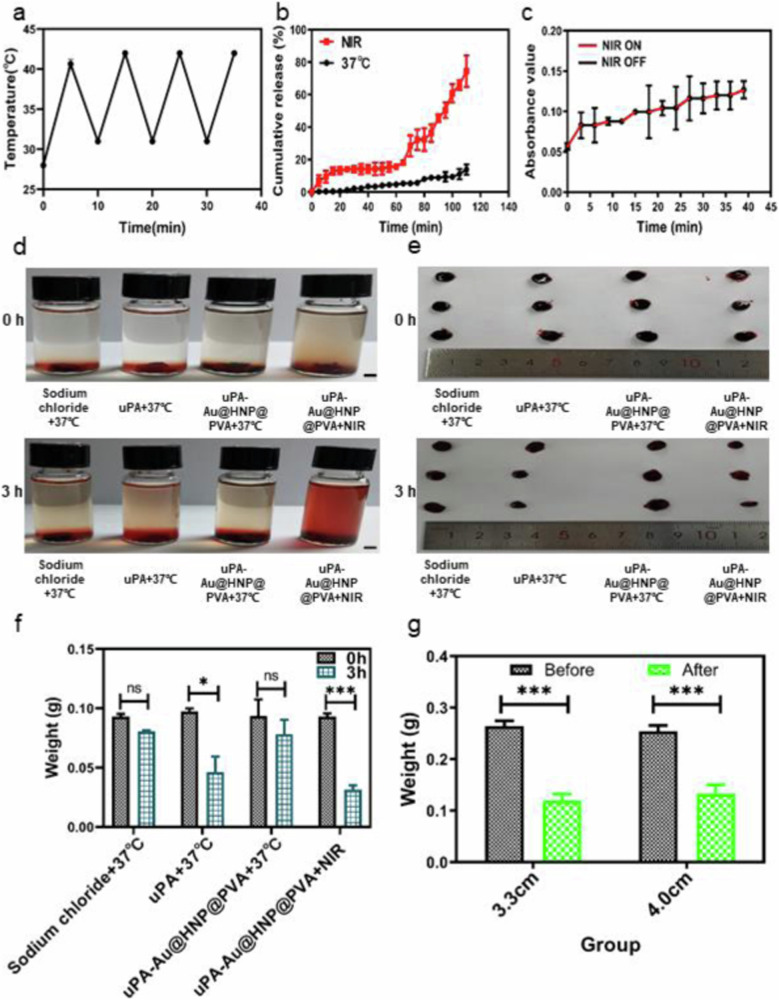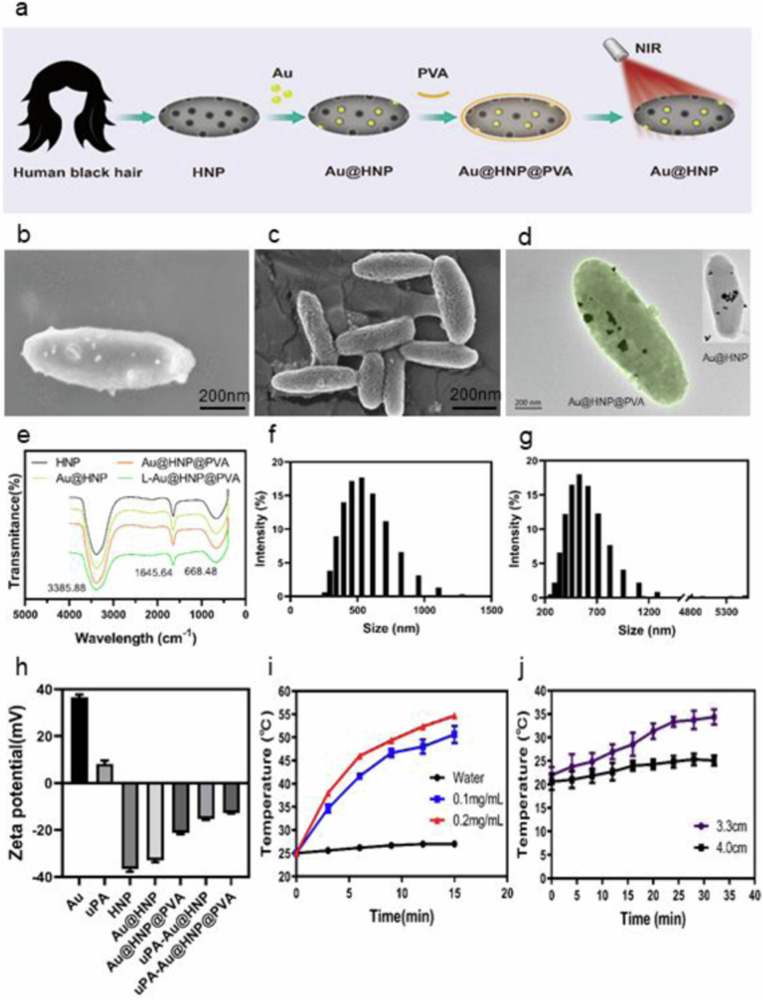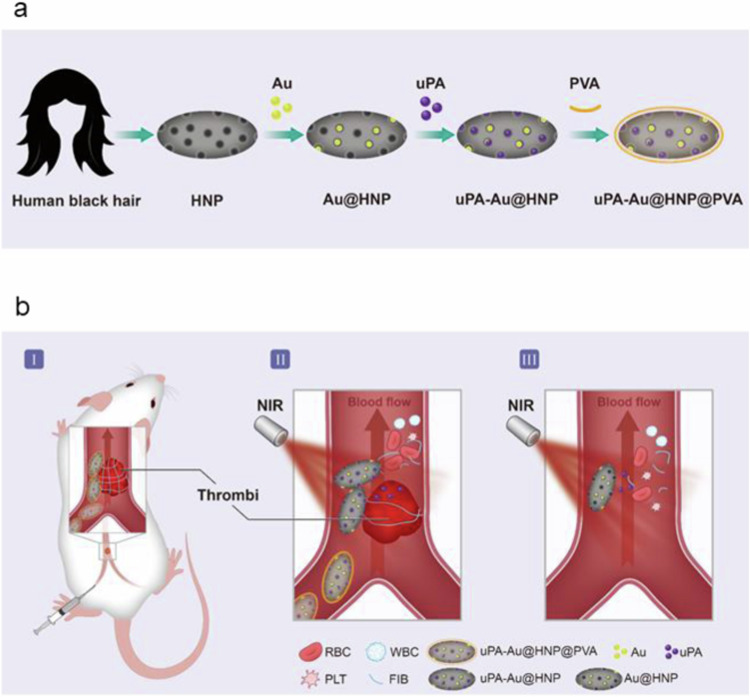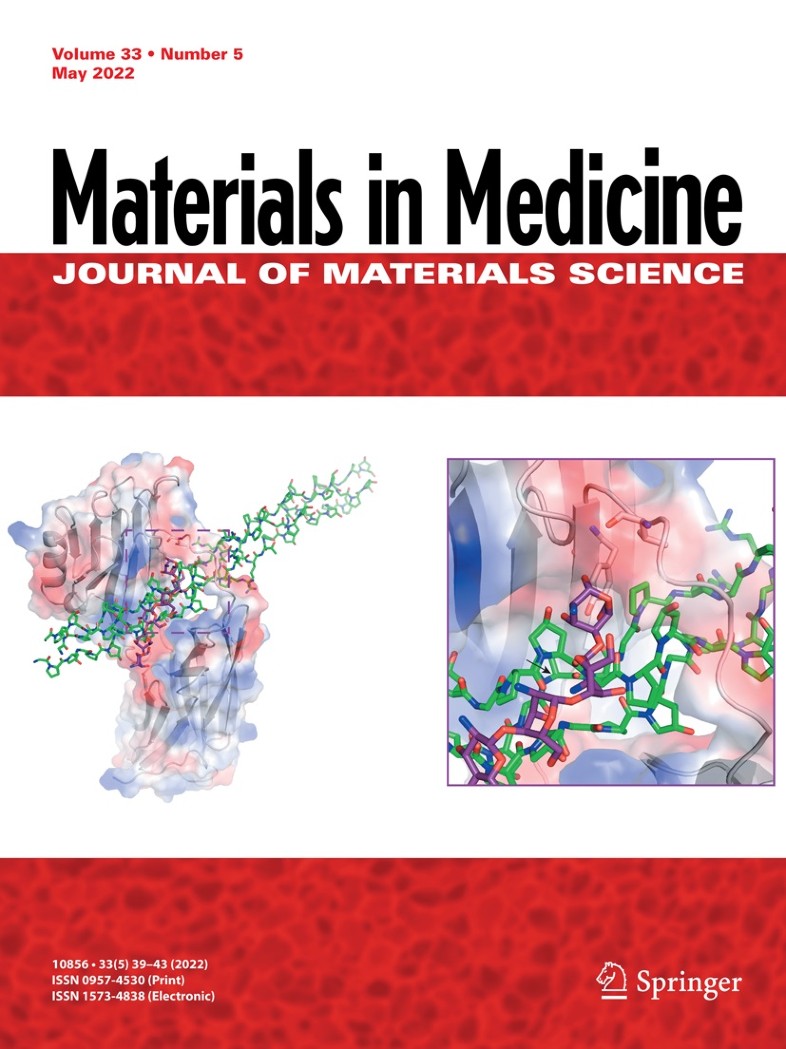Thrombolytic therapy of human black hair and Au drug-loaded nanocapsules in vivo and in vitro based on near infrared II laser response
Abstract
Venous thromboembolism ranks as the third most prevalent cardiovascular disease. Nanotechnology-based drug carriers show significant potential for thrombolytic therapy. However, existing systems face challenges, including environmental impact and limited accessibility. To address these, we developed a novel delivery system using human black hair-derived nanoparticles (HNPs). These HNPs were loaded with the thrombolytic agent urokinase plasminogen activator (uPA) and a minimal concentration of gold nanoparticles (AuNPs). These components were encapsulated within a polyvinyl alcohol (PVA) membrane to create the nanocapsule drug delivery system, uPA-Au@HNP@PVA. Upon intravenous injection into a rat model with venous thrombosis, the system leveraged targeted blood flow to reach thrombus sites. Under 1064 nm NIR irradiation, the PVA membrane dissolved, exposing and releasing the drugs for intelligent thrombolysis. This system demonstrated excellent thrombolytic efficacy both in vivo and in vitro, coupled with robust biocompatibility in various biological tests, suggesting a wide range of potential applications.
Graphical Abstract
Representation: a. Depiction of the uPA-Au@HNP@PVA synthesis process. b. Diagrammatic explanation of intelligent thrombolytic therapy for specific drug delivery in a rat venous thrombosis model: I. Intravenous administration of uPA-Au@HNP@PVA; II. Targeted delivery to thrombus sites, navigation of uPA-Au@HNP@PVA to the thrombus location through targeted blood circulation, whereupon exposure to 1064 nm NIR irradiation causes a temperature rise, resulting in PVA dissolution, and drug release; III. NIR-triggered drug release and thrombolysis. Intelligent thrombolysis facilitated by 1064 nm NIR irradiation.




 求助内容:
求助内容: 应助结果提醒方式:
应助结果提醒方式:


